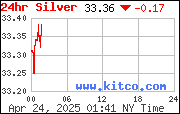In case you wonder why the opposition LDP is not much popular than the despised DPJ, this is one reason why. They are no different.
An LDP politician elected from Hokkaido demands the national government to do something against the mayor of Sapporo City who has declared he doesn't want disaster debris from Miyagi and Iwate in his city, and the Minister of the Environment promises some type of "action" so that the mayor starts to think like everyone else in the Diet (i.e. not think).
Yomiuri Shinbun (4/3/2012):
がれき拒否の札幌市長に「アクションを」参院委
Upper House Committee: Take "action" against Sapporo Mayor who refuses disaster debris
東日本大震災で発生した震災がれきの処理を巡り、受け入れ拒否の意向を表明している札幌市の上田文雄市長の発言が、2日の参院予算委員会集中審議で取り上げられた。
Remarks of the mayor of Sapporo City, Fumio Ueda, were a topic of discussion during the intensive deliberation in the Upper House (House of Councilors) Budget Committee on April 2. Mayor Ueda has said he will refuse to accept disaster debris from the March 11, 2011 earthquake/tsunami.
細野環境相は「しっかり説明し、理解をいただきたい」と述べ、札幌市に改めて受け入れを要請する考えを示した。
Minister of the Environment Hosono said, "We will explain to him again, so that he understands", and he would request again that Sapporo City accept the debris.
道選挙区選出の長谷川岳参院議員(自民党)の質問に答えた。岩手、宮城県のがれきでも放射性物質の汚染を疑っている上田市長の発言について、長谷川議員は「非常に残念」と批判。細野環境相に対し「政令市の市長がどういう発言をしているのか、もっと敏感に考えて、札幌市長に何らかのアクションを起こすべきだ」と迫った。
Hosono's remark was in response to the question by Member of the Counsilors Gaku Hasegawa (LDP, from Hokkaido). Hasegawa said it was "highly regrettable" that the mayor of Sapporo had expressed suspicion that the disaster debris even in Iwate and Miyagi Prefecture was contaminated with radioactive materials. He pressed Minister Hosono, "You have to be more sensitive to what a mayor of an ordinance-designated city is saying, and take some action against the mayor of Sapporo City."
政府は既に、被災3県などを除く35道府県と札幌市を含む10政令市に文書で受け入れを要請し、今月6日までの回答を求めている。細野環境相は「札幌市長がどういう発言をしたのか確認する」とした上で「私どもの考えと違うようであれば、しっかり説明し、理解をいただきたいと思う」と応じた。
The national government has already formally requested the 35 Prefectures and 10 ordinance-designated cities including Sapporo City to accept the debris. The prefectures and cities will have to submit their answers by April 6. Minister Hosono said, "I will confirm what the mayor of Sapporo City has said. If what he says is different from what we think, I will explain to him thoroughly so he understands [literal translation; what Hosono means is "so he agrees with us and accepts the debris"]."
Debris from Iwate and Miyagi IS radioactive, by the way (see my March 24 post). And radioactivity in the debris will get concentrated as the debris gets incinerated
There are 13 ordinance-designated cities in Japan (Sapporo, Sendai, Chiba, Yokohama, Kawasaki, Nagoya, Kyoto, Osaka, Kobe, Hiroshima, Fukuoka, Kitakyushu, Kumamoto). If a city becomes an ordinance-designated city, it will take on the functions normally performed by a prefectural government such as public education, social welfare, sanitation, business licensing and urban planning, and it will be allowed to designate part of the city into "special wards" governed by mayors of the wards. The population level to become an ordinance-designated city is usually 1 million.
Mayor Tanabe, in his regular press conference in late March, said:
がれき処理は時間が解決するかもしれませんけれども、放射能は時間では解決できない問題だと考えております
Disaster debris disposal may be resolved with time, but I don't think radioactivity can be resolved with time.
That's heresy by the Japanese government. Let's see, what kind of stick and the carrot will Hosono show to the mayor of Sapporo?
One notable independent journalist covering the disaster debris has had to close his twitter account after receiving a ton of tweets slandering and threatening him for his stance of opposing the wide-area disposal of disaster debris (in particular of debris from Onagawa in Miyagi).
There are other "rumors" that I've heard of harassment of citizen activists against the wide-area disposal. If you look at a guy at the Kyoto PR event by the Ministry of the Environment, it's not very difficult to see that the rumors may be true.
To support Mayor of Sapporo Fumio Tanabe, you can write him an email through this page.















 Tokyo Time
Tokyo Time
![[Most Recent Quotes from www.kitco.com]](http://www.kitconet.com/charts/metals/gold/t24_au_en_usoz_2.gif)

